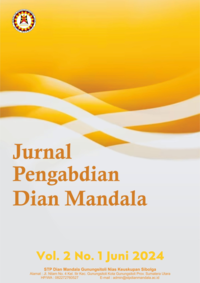Penggunaan Statistika Bayes dalam Menganalisis Pola Suara Pemilu untuk Mendeteksi Potensi Kecurangan
DOI:
https://doi.org/10.62200/jpdm.v3i1.225Keywords:
Bayesian Method, Election Fraud, Forensic Analysis, Polling Stations, Vote DistributionAbstract
Election integrity is a key element in ensuring democratic legitimacy, yet election fraud remains a significant threat to this process. This research aims to evaluate the use of Bayesian statistics in detecting anomalies in vote distributions that may indicate potential election fraud. In the context of elections, whose reliability is often questioned, statistical analysis becomes crucial to ensure transparency and credibility in election results. This study uses national election data collected from various polling stations (TPS), focusing on vote distribution per candidate in each TPS. A Bayesian probabilistic model is applied to analyze the observed vote distribution compared to the expected distribution. By using Bayesian inference, researchers can update the probability distribution based on the obtained data, allowing for more accurate anomaly identification. The analysis results show significant deviations in several TPS, where the observed vote distribution exhibits patterns inconsistent with the expected distribution. These anomalies are suspicious as they may indicate manipulation or errors in the vote counting process. The implications of this research suggest that the Bayesian method can be used to improve election transparency and provide a more reliable tool for detecting fraud. The future application of this technique can help increase public trust in election results and support the integrity of the democratic process. This study also recommends further development of the analytical model to expand the scope of anomaly detection and enhance fraud detection accuracy in larger and more complex elections.
References
Aditama, L. Y., Khusni, U., Sriyadi, S., Sulistiyah, S., Aprizal, I., & Pratama, M. P. (2024). Automatic face detection uses deep learning to prevent cheating in general election. In ICAISD 2024 - International Conference on Advanced Information Scientific Development: AI for Investing the Sustainability Development of Human Living Digitally (pp. 92–97). https://doi.org/10.1109/ICAISD63055.2024.10895360
Agyemang, E. F., Nortey, E. N. N., Minkah, R., & Asah-Asante, K. (2023). Baseline comparative analysis and review of election forensics: Application to Ghana's 2012 and 2020 presidential elections. Heliyon, 9(8), e18276. https://doi.org/10.1016/j.heliyon.2023.e18276
Armero, C., Rodríguez, P., & de la Torre Hernández, J. M. (2022). A brief look into Bayesian statistics in cardiology data analysis [Una pequeña mirada a la estadística bayesiana en el análisis de datos cardiológicos]. REC: Interventional Cardiology, 4(3), 207–215. https://doi.org/10.24875/RECICE.M22000288
Bernardo, J. M. (2020). 1.05 - Bayesian methodology in statistics. In Comprehensive Chemometrics: Chemical and Biochemical Data Analysis (2nd ed., Vol. 1, pp. 123–147). https://doi.org/10.1016/B978-0-444-64165-6.01024-7
Brown, M., Hale, K., Jordan, S., & Williamson, R. D. (2024). Restoring trust in US elections through effective election administrator messaging. Public Opinion Quarterly, 88(SI), 632–655. https://doi.org/10.1093/poq/nfae033
Cao, J., Kim, S.-Y. S., & Alvarez, R. M. (2022). Bayesian analysis of state voter registration database integrity. Statistics, Politics, and Policy, 13(1), 19–40. https://doi.org/10.1515/spp-2021-0016
Chowdhury, M. T., Tanim, S. A., Shrestha, T. E., Hossain, M. F., & Bhuyan, M. H. (2025). Enhancing electoral integrity: A multi-layered approach to electronic voting security using Arduino and biometric authentication. In Lecture Notes in Networks and Systems (Vol. 1299, pp. 643–654). https://doi.org/10.1007/978-981-96-3358-6_47
Figueiredo Filho, D., Silva, L., & Carvalho, E. (2022). The forensics of fraud: Evidence from the 2018 Brazilian presidential election. Forensic Science International: Synergy, 5, 100286. https://doi.org/10.1016/j.fsisyn.2022.100286
Ginn, G. L., Campbell-Cooper, C., & Lockett, A. (2025). The growing role of Bayesian methods in clinical trial design and analysis. Medicine (United Kingdom), 53(6), 388–391. https://doi.org/10.1016/j.mpmed.2025.04.006
Green, J. (2021). Anomaly detection in election data and its representation of U.S. infrastructure vulnerability. In 2021 IEEE 12th Annual Information Technology, Electronics and Mobile Communication Conference (IEMCON 2021) (pp. 503–508). https://doi.org/10.1109/IEMCON53756.2021.9623111
Huang, Z., Rivest, R. L., Stark, P. B., Teague, V. J., & Vukcevic, D. (2020). A unified evaluation of two-candidate ballot-polling election auditing methods. In Lecture Notes in Computer Science (Vol. 12455, pp. 112–128). https://doi.org/10.1007/978-3-030-60347-2_8
Kerr, N., & Lührmann, A. (2017). Public trust in manipulated elections: The role of election administration and media freedom. Electoral Studies, 50, 50–67. https://doi.org/10.1016/j.electstud.2017.08.003
Kerr, N., King, B. A., & Wahman, M. (2024). Introduction: The global crisis of trust in elections. Public Opinion Quarterly, 88(SI), 451–471. https://doi.org/10.1093/poq/nfae016
Liang, W., & Dai, H. (2022). Bayesian inference. In Quantum Chemistry in the Age of Machine Learning (pp. 233–250). https://doi.org/10.1016/B978-0-323-90049-2.00005-6
Liu, Y., Ye, C., Sun, J., Jiang, Y., & Wang, H. (2021). Modeling undecided voters to forecast elections: From bandwagon behavior and the spiral of silence perspective. International Journal of Forecasting, 37(2), 461–483. https://doi.org/10.1016/j.ijforecast.2020.06.011
Montgomery, J. M., Olivella, S., Potter, J. D., & Crisp, B. F. (2015). An informed forensics approach to detecting vote irregularities. Political Analysis, 23(4), 488–505. https://doi.org/10.1093/pan/mpv023
Pulgrossi, R. C., Oliveira, N. L., Polpo, A., & Izbicki, R. (2018). A comparison of two methods for obtaining a collective posterior distribution. In Springer Proceedings in Mathematics and Statistics (Vol. 239, pp. 221–230). https://doi.org/10.1007/978-3-319-91143-4_21
Rozenas, A. (2017). Detecting election fraud from irregularities in vote-share distributions. Political Analysis, 25(1), 41–56. https://doi.org/10.1017/pan.2016.9
Stern, H. S. (2015). Bayesian statistics. In International Encyclopedia of the Social & Behavioral Sciences (2nd ed., pp. 373–377). https://doi.org/10.1016/B978-0-08-097086-8.42003-9
Trassinelli, M. (2020). An introduction to Bayesian statistics for atomic physicists. Journal of Physics: Conference Series, 1412(6), 062008. https://doi.org/10.1088/1742-6596/1412/6/062008
Wilson, R. B., & Ogino, S. (2016). Bayesian analysis. In Molecular Pathology in Clinical Practice (2nd ed., pp. 77–89). https://doi.org/10.1007/978-3-319-19674-9_5
Yao, K. (2022). Bayesian inference with uncertain data of imprecise observations. Communications in Statistics - Theory and Methods, 51(15), 5330–5341. https://doi.org/10.1080/03610926.2020.1838545
Downloads
Published
How to Cite
Issue
Section
License
Copyright (c) 2025 Jurnal Pengabdian Dian Mandala

This work is licensed under a Creative Commons Attribution-ShareAlike 4.0 International License.










